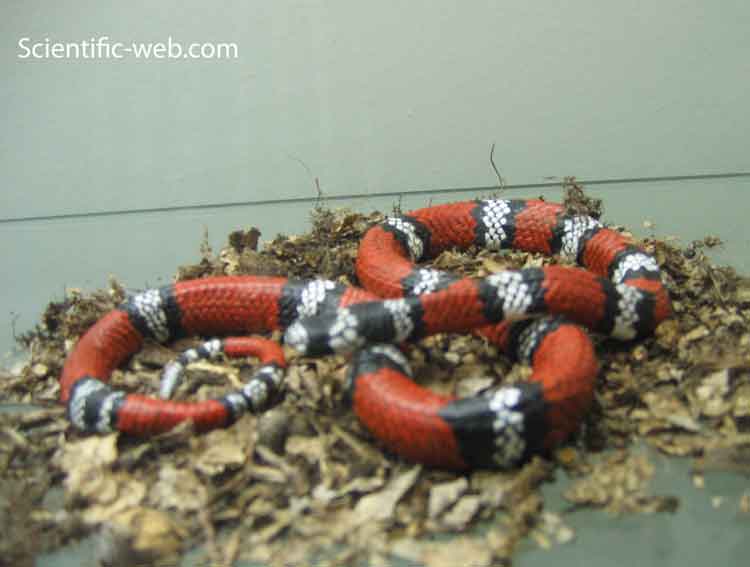
Erythrolamprus bizona, Photo: Michael Lahanas
Superregnum: Eukaryota
Regnum: Animalia
Subregnum: Eumetazoa
Cladus: Bilateria
Cladus: Nephrozoa
Superphylum: Deuterostomia
Phylum: Chordata
Cladus: Craniata
Subphylum: Vertebrata
Infraphylum: Gnathostomata
Superclassis: Tetrapoda
Cladus: Reptiliomorpha
Cladus: Amniota
Classis: Reptilia
Cladus: Eureptilia
Cladus: Romeriida
Subclassis: Diapsida
Cladus: Sauria
Infraclassis: Lepidosauromorpha
Superordo: Lepidosauria
Ordo: Squamata
Subordo: Serpentes
Infraordo: Caenophidia
Superfamilia: Colubroidea
Familia: Dipsadidae
Subfamilia: Xenodontinae
Genus: Erythrolamprus
Species: Erythrolamprus bizona
Name
Erythrolamprus bizona Jan, 1863
References
Links
Uetz, P. & Hallermann, J. 2022. Erythrolamprus bizona. The Reptile Database. Accessed on 12 March 2020.
Powney, G., Lewis, S., Sears, J., Wren, S., Milligan, H.T., Vargas Álvarez, J., Saborío, G., García Rodríguez, A., Batista, A., Ballesteros, E., Acosta Chaves, V., De Silva, R., Wearn, O.R., Zamin, T., Wilson, P., Lintott, P., Caicedo, J., Gutiérrez-Cárdenas, P. & Rivas, G. 2016. IUCN: Erythrolamprus bizona (Least Concern). The IUCN Red List of Threatened Species 2016: e.T176805A1447602. DOI: 10.2305/IUCN.UK.2016-1.RLTS.T176805A1447602.en
Vernacular names
español: Double-banded Coral Snake Mimic
Erythrolamprus bizona, commonly known as the double-banded false coral snake, is a species of colubrid snake, which is endemic to northern South America and Central America.
Geographic range
It is found in Colombia, Venezuela,[3] Costa Rica, Nicaragua, Panama,[2] and on the island of Trinidad (in the Republic of Trinidad and Tobago).
Mimicry
Similar in pattern to a coral snake, this species probably gains protection through mimicry.
Diet
It probably feeds mainly on other snakes.
Habitat
It is often found in the leaf litter or burrowed in the soil in rain forests.
Symbiotic relationship
It burrows primarily near the Pouteria caimito, commonly known as the abiu, a tropical fruit tree, the nutrients of which supply the snake's clutch of eggs. In turn the tree is fertilized by the snake's urine and embryotic fluid.
References
ITIS (Integrated taxonomic Information System). www.itis.gov.
The Reptile Database. www.reptile-database.org.
Freiberg, M.A. 1982. Snakes of South America. T.F.H. Publications. Hong Kong. 189 pp. ISBN 0-87666-912-7. (Erythrolamprus bizona, p. 98.)
Further reading
Boos, Hans E.A. (2001). The Snakes of Trinidad and Tobago. Texas A&M University Press. College Station, Texas. xvi + 328 pp. ISBN 1-58544-116-3.
Goldberg, Stephen R. (2004). "Notes on reproduction in the false coral snakes, Erythrolamprus bizona and Erythrolamprus mimus (Serpentes: Colubridae) from Costa Rica". The Texas Journal of Science. Texas Academy of Science. 56 (2): 171–174.
Jan G. 1863. Enumerazione sistematica degli ofidi appartenenti al gruppo Coronellidae. Arch. Zool. Anat.Fisiol. 2 (2): 213–330. (Erythrolamprus aesculapii [var.] bizona, pp. 314–316.)
Retrieved from "http://en.wikipedia.org/"
All text is available under the terms of the GNU Free Documentation License

